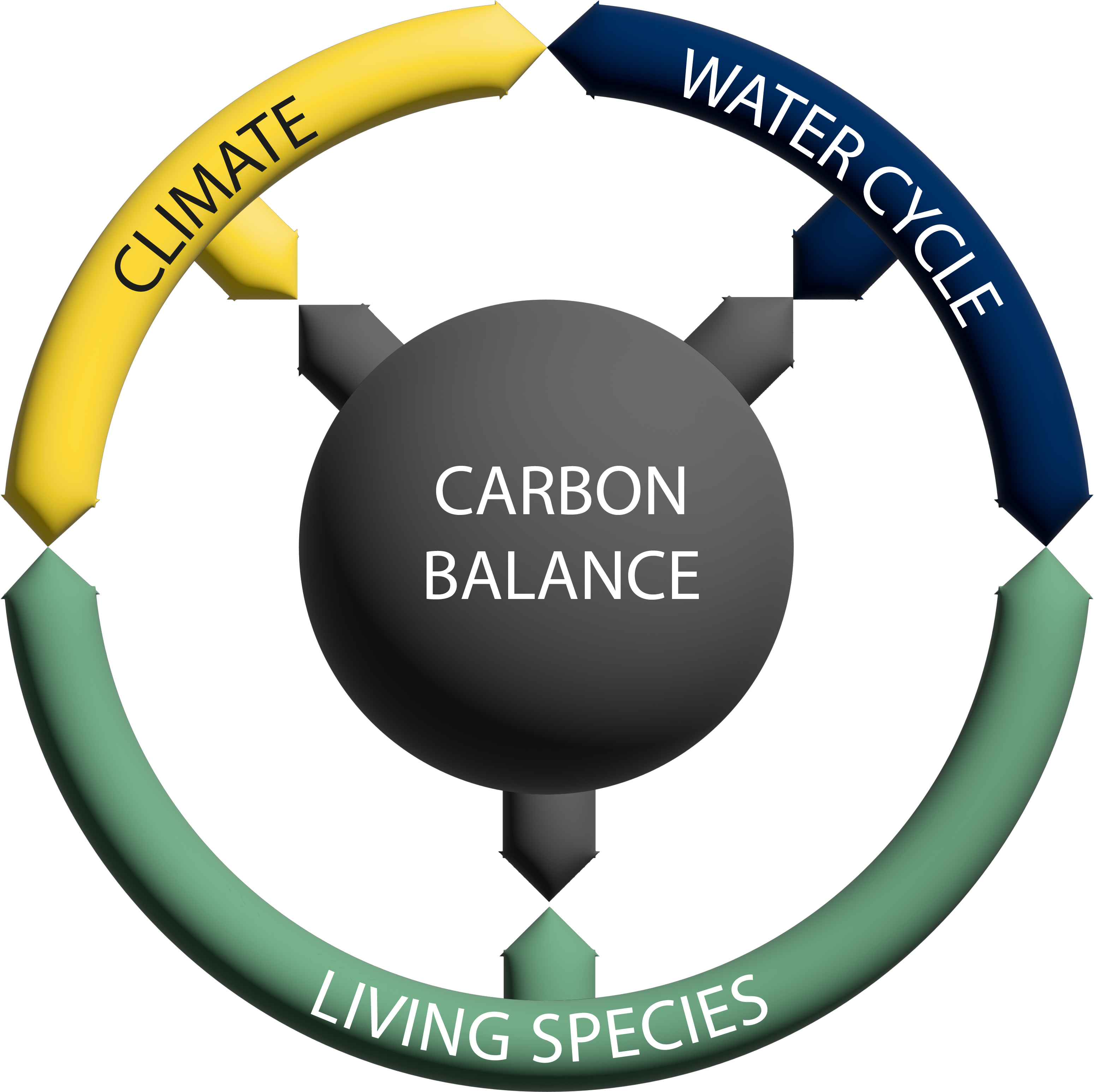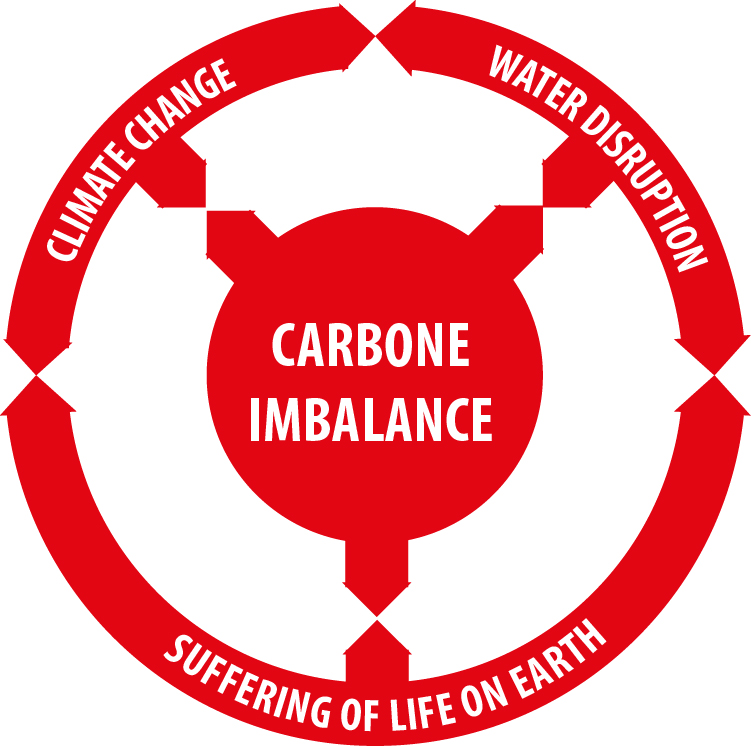Let’s measure real decarbonation,
that of people and living things
Carbon balance is the cause and consequence of three series of complex balances
– The climate,
– The water cycle, and the rocks that are impacted by water run-off and also trap carbon,
– That of the carbon contributions of all living species : the human species, the so-called domesticated species (animal or plant), and the others, including their decomposition and fossils that trap or release carbon.

As soon as non-domesticated species were no longer able to capture man-made emissions, carbons began to accumulate in the atmosphere, and complex balances became complex imbalances : each slippage in one area causing slippage in the other three and increasing stress for living species.
For a long time, carbon emissions from humans (mainly the burning of fossil fuels) and from domesticated species (mainly livestock farming) did not alter the global balance : non-domesticated species (trees, plankton, bacteria, etc.) easily captured the excess carbon (they represent more than 999 per thousand of the weight of living organisms on earth). They provided 100% of decarbonation.

We continued to see non-domesticated species as a partial factor in decarbonation, lending a helping hand free of charge. When there were 100 more carbons in the atmosphere, non-domesticated species captured 60, then 40, then 25.
Today, the violence of the stress suffered by non-domesticated species threatens to reverse their contribution : for example, the stress on trees causes them to emit carbon instead of capturing it.
Effective decarbonation requires us to adopt the point of view of all living species, in order to accurately measure and anticipate their stress and their contribution to the carbon balance.
See how our logo reflects this balance
